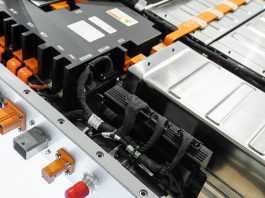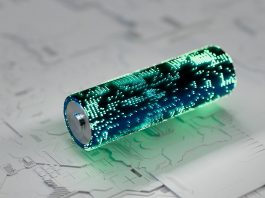A team of Åbo Akademi University researchers is pioneering the next generation of sustainable battery design, developing sodium batteries using advanced 3D printing technology.
The researchers are performing a multidisciplinary project known as SUSTEC that combines 3D printing techniques with renewable materials and high-temperature technology to develop unique, next-generation, environmentally friendly batteries based on sodium instead of lithium. The novel sodium batteries may be a key breakthrough in powering the green energy transition.
The SUSTEC project
As the planet strives toward carbon neutrality, the increasing use of renewable energy and electrification in society creates a significant need for batteries for electrical energy storage. This means innovative battery designs will be essential to supply the exponentially increasing demand and protect the Earth’s finite mineral resources.
Batteries are comprised of two electrodes; one that is positively charged (cathode) and one that is negatively charged (anode). The cathode and anode are separated by an electrolyte, which is usually a salt-containing liquid.
The SUSTEC project aims to create sustainable batteries by employing advanced 3D printing technology. The university team intends to replace lithium in the cathode with sodium and the anode’s graphite with wood-based carbonaceous material. Additionally, these sustainable sodium batteries will contain a solid electrolyte in which the electrodes will be integrated.
Advancing sodium batteries
Sodium is one of the most abundant materials on Earth, whereas lithium and different types of graphite are limited resources. Due to graphite not being the ideal candidate to combine with sodium, the team are looking to find an environmentally friendly carbonaceous material based on wood. The researchers will use pyrolysis – known as dry distillation – to design porous material to transport sodium ions efficiently.
Chunlin Xu, Professor of Renewable Materials Chemistry at the Laboratory of Natural Materials Technology, Åbo Akademi University, commented: “The electrolyte is the battery part that is responsible for transportation of ions between the anode and cathode. What is unique about our project is that we seek to use bio-based materials to create the right characteristics for the solid electrolyte.”
The researchers will utilise 3D printing technology and wood-based materials, such as nanocellulose and lignin, to develop components for the new sodium batteries. The overall aim is to manufacture complete batteries in the future using 3D printing.
Johan Bobacka, Professor of Analytical Chemistry at the Laboratory of Molecular Science and Engineering, Åbo Akademi University, concluded: “The energy density of a sodium battery is somewhat lower than that of a lithium battery, so we do not expect the new-generation batteries to be more effective. Our fundamental aim is to make batteries more sustainable than before. The project is a relevant contribution to global research. It has several unique aspects, and it is a new, significant opening for battery research at Åbo Akademi University.”









